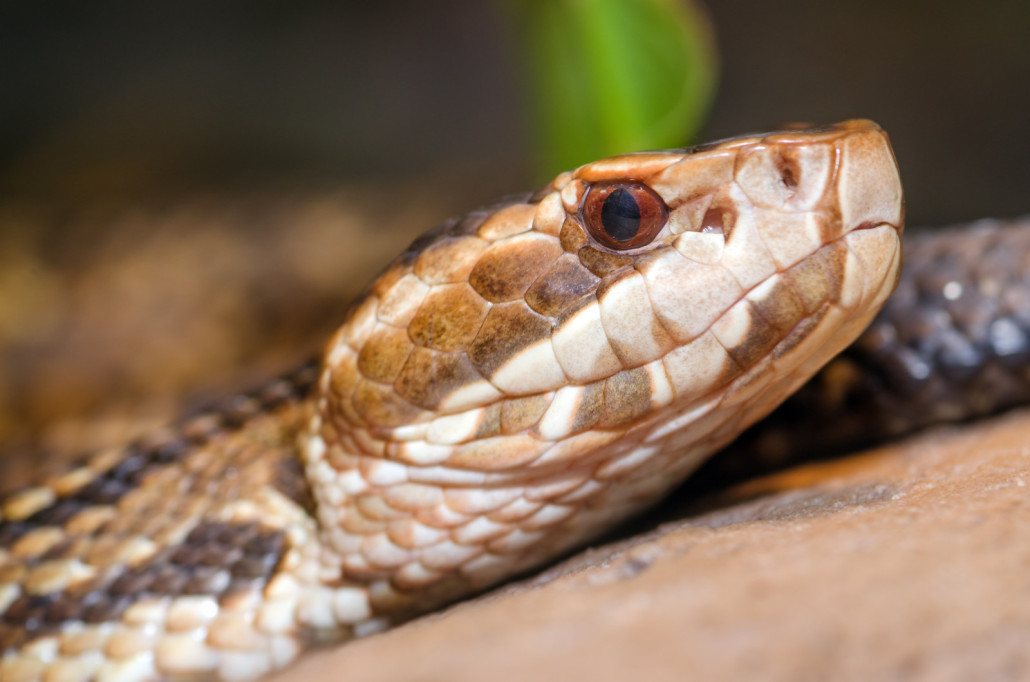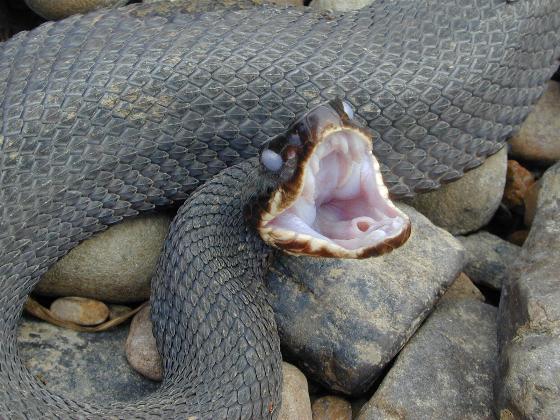Re: What ya'll say on this snake ?
Posted: Mon May 16, 2016 11:42 pm
Just heard back from my friend he said it was a broad banded water snake or a yellow bellied waters snake.Munk wrote:Broadband water snake.
The focal point for Texas firearms information and discussions
https://mail.texaschlforum.com/
Just heard back from my friend he said it was a broad banded water snake or a yellow bellied waters snake.Munk wrote:Broadband water snake.
Just coral snakes.JustSomeOldGuy wrote:True. Refresh my memory; besides coral snakes, what other naturally occurring in the continental United States venomous snakes DO NOT have slitted pupils?AJSully421 wrote: not all venomous snakes have vertical pupils, it is dangerous to suggest that they do. Plus, some with slitted will look more round in low light. It is not a reliable way to tell, and could get someone hurt.
I'm with Indiana Jones, don't like (venomous) snakes......AJSully421 wrote: "Kill them all and let God sort them out" works for more than just terrorists.
After looking around at a lot of pics to convince my wife that it was not a bad one i think your friend is spot on or the other one i saw was a brown water snake . I have killed a cotton mouth in my back yard before so that is the main reason i was a little on the fence , i for to mention that my neighbor has a tank literally right behind is house and there is also a creek running threw my land that holds water almost year around so there could easily be one.Jago668 wrote:Just heard back from my friend he said it was a broad banded water snake or a yellow bellied waters snake.Munk wrote:Broadband water snake.
Pawpaw wrote:As opposed to a dialup water snake?Munk wrote:Broadband water snake.
You would never mistake a dial-up water snake. They are easily recognizable by the chirping and screeching sound that they make before they attempt to connect with a strike.tomtexan wrote:Pawpaw wrote:As opposed to a dialup water snake?Munk wrote:Broadband water snake.


Thanks for shattering my fantasy!AJSully421 wrote:TAM, that is a regular water snake. Water Moccasins are generally stubby and fat.

^^^^^^^^^VoiceofReason wrote:You can’t cure stupid.

I swear...flintknapper wrote:Yellow Bellied Water Snake.
Broad Band Water Snakes can vary widely in coloration and pattern. Could even appear to be almost a solid color… but the bands are present if you look closely.
Both snakes have the habit of flattening their heads (and bodies sometimes) to make themselves look larger. This can result in the head looking more triangular than it normally is, but a triangular head in itself…is NOT a reliable feature by which to identify.
In the Lower U.S. we have four venomous snakes (many species) that are INDIGINOUS.
1. Coral snake
2. Rattlesnakes
3. Moccasins/Cottonmouth
4. Copperheads
The last three (and all specie variations) are ‘Pit Vipers’, ALL have a distinctly triangular head with a noticeably narrower neck (even when juveniles). ALL indigenous pit vipers have an elliptical pupil of the eye.
The Coral Snake is easily distinguished from the pit vipers by its coloration alone. It does NOT have a triangular head and DOES have a round eye pupil. Its venom is neurotoxin. Of course, this snake would never be mistaken for a venomous water snake.
Water Moccasins (when mature) are noticeably ‘thick’ in build with respect to body length. They don’t have a long tapering tail like other harmless water snakes. But other water snakes do a pretty good job of mimicking a Moccasin/Cottonmouth.
The Yellow bellied Water Snake is often killed when mis-identified as a Cottonmouth. The Broadband and Diamond back water snake suffer greatly for looking like a Moccasin.
The only sure way to tell if an indigenous water snake is venomous is to note the pupil shape and/or note the scale arrangement of the bottom side of the tail AFTER the anal vent.
Venomous Water Snakes (indigenous to the U.S.) will have a single row of scales. Non-venomous (harmless) will have a double row.
And yes, I know either method of identification will involve getting closer to the snake than most are willing. Just saying….these are the only two foolproof indicators, aside from being bitten.
Most snakes under most circumstances are beneficial. If there is no pressing reason, please do not kill them. Hat is off to the OP….for relocating the snake.


That a Cottonmouth, also known as a Water Moccasin. Very poisonous and very mean. Kill it!